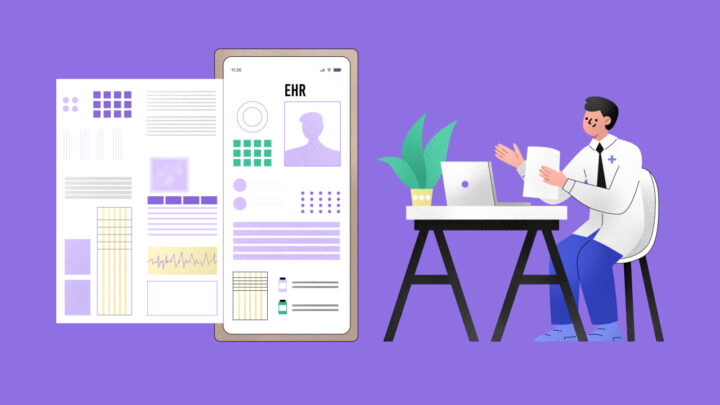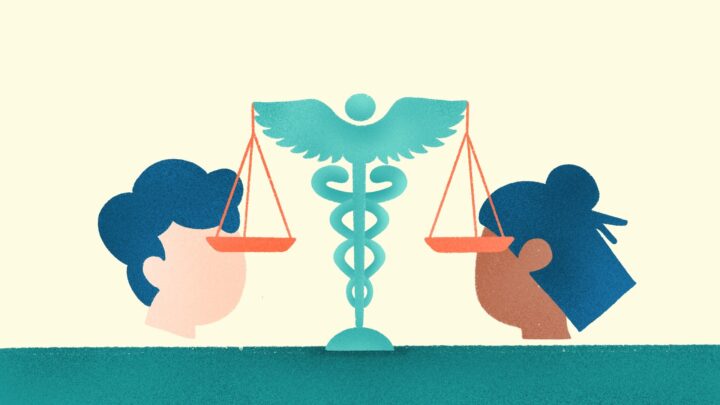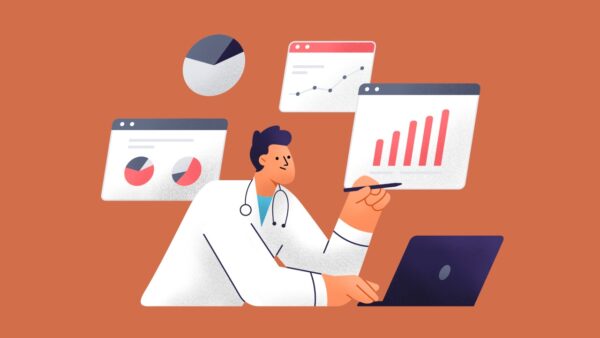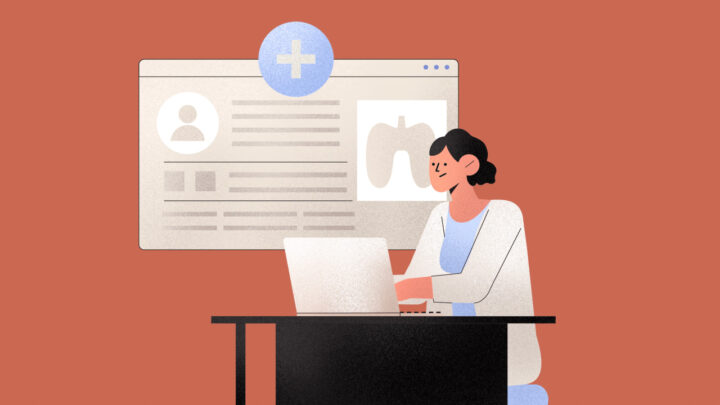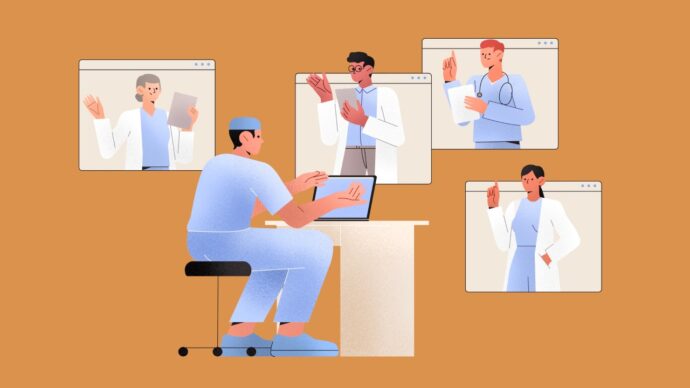
Despite living in an increasingly digital age, an overwhelming amount of medical data and patient information are still stored in paper format. Not only does this take up a lot of physical space in archives and filing cabinets, but if one of your patients gets sick or injured while working away or on vacation, your office needs to mail or fax their records.
Chances are you’ve heard that joining a health information exchange (HIE) can help streamline your processes and facilitate the transfer of patient information. But, precisely what is health information exchange, how does it work, and most importantly, is a HIE healthcare system right for your practice?
To help answer this question, we asked Sermo physicians about their experience with HIEs. From a lack of shared data, to databases containing too much data, to less time spent with patients, physicians across the U.S. shared their concerns:
“In spite of many years of talk and efforts, a satisfactory HIE system has yet to be developed. All the different EHRs (EMRs) cannot satisfactorily communicate with one another.”
Cardiology, U.S.
“Despite having this technology, it is still difficult to always get into other system’s records unless they are in the same EHR company, like Epic. My practice has to get logins from various different hospital systems to pull some of the records, which is frustrating. It would be nice to have a universal EHR and have everything connected without the need to request or wait for the records.”
Family Medicine, U.S.
“Greatly decreased face to face time with patients.”
OBGYN, U.S.
“It takes so long to find what’s really needed in the EHR note that sharing is not of much value… The EHR notes contain so much worthless material that it is cumbersome to deal with.”
OBGYN, U.S.
In this guide, we’ll cover all the definitions and details, determine how HIE in healthcare can help physicians improve the quality of patient care, and look at common challenges physicians are facing right now.
Health information exchange, explained
So, what is Health Information Exchange? Providing a precise Health Information Exchange definition is tricky because the term can be used as both a verb and a noun. As a verb, HIE (health information exchange) simply refers to the direct sharing of health-related information electronically between two authorized entities (medical facilities, providers, patients, etc.) As a noun, an HIE can be any organization that provides the technology or software needed to ensure the secure transfer of health-related data. So how do you participate? You’ll learn how to join an HIE later in this guide.

What is an HIE file?
In terms of the information that’s shared, you may be wondering exactly what data you can send or receive. So let’s take a moment to focus on the type of information a typical HIE includes:
- Medical history
- Current medications
- Laboratory orders
- Clinical results
- Immunizations
- Syndromic surveillance
- Public health data
- Progress notes and documentation (like transcripts, care summary notes, EMT/1st responder notes, etc.)
- Patient referrals
- Electronic prescribing and refill information
- Discharge summaries
Of course, facilitating the electronic transfer of health information will never entirely eliminate the need for communication between patient and their primary care physician, nor between various healthcare providers (HCPs). However, by improving the flow of information, you and your staff can improve the quality of care you provide while making significant time and overall cost savings.
In a recent Sermo survey of over 180 medical professionals, 32% said enhancing interoperability (using software to exchange and make use of information) would be a significant step forward. A further 31% said they believed joining an HIE would help them prioritize their value-based care and the coordination of patients.

Types of health information exchange
So what is HIE in healthcare primarily used for? To answer that question fully and provide situational examples, we must first understand the differences between the three main types of health information exchange:
Directed exchange
- A primary care physician could use a directed exchange to send documentation detailing medications, lab results, and specialist referral notes to avoid redundant information collection, duplication of tests, or medication errors.
- HCPs can deliver quality-measure reports and immunization information directly to the Center for Medicare and Medicaid Services (CMS) and the relevant public health organizations.
Query-based exchange
HCPs commonly utilize query-based exchanges to deliver unplanned care in emergencies. For example:
- An ER physician may request information about medical history, current medications, and previous radiology images to avoid duplicate testing and adverse medication reactions.
- An obstetrician can request pregnancy care records to help them make safer decisions for unfamiliar patients.
Consumer-mediated exchange
Consumer-mediated exchange provides patients with fast, easy, and secure online access to their own medical information. This allows them to play a more active role in managing their healthcare by:
- Supplying other HCPs with their medical history
- Supplying other HCPs with current health and medication information
- Identifying and correcting inaccuracies in their health information
- Identifying and correcting billing inaccuracies
- Actively monitoring and tracking their own healthcare
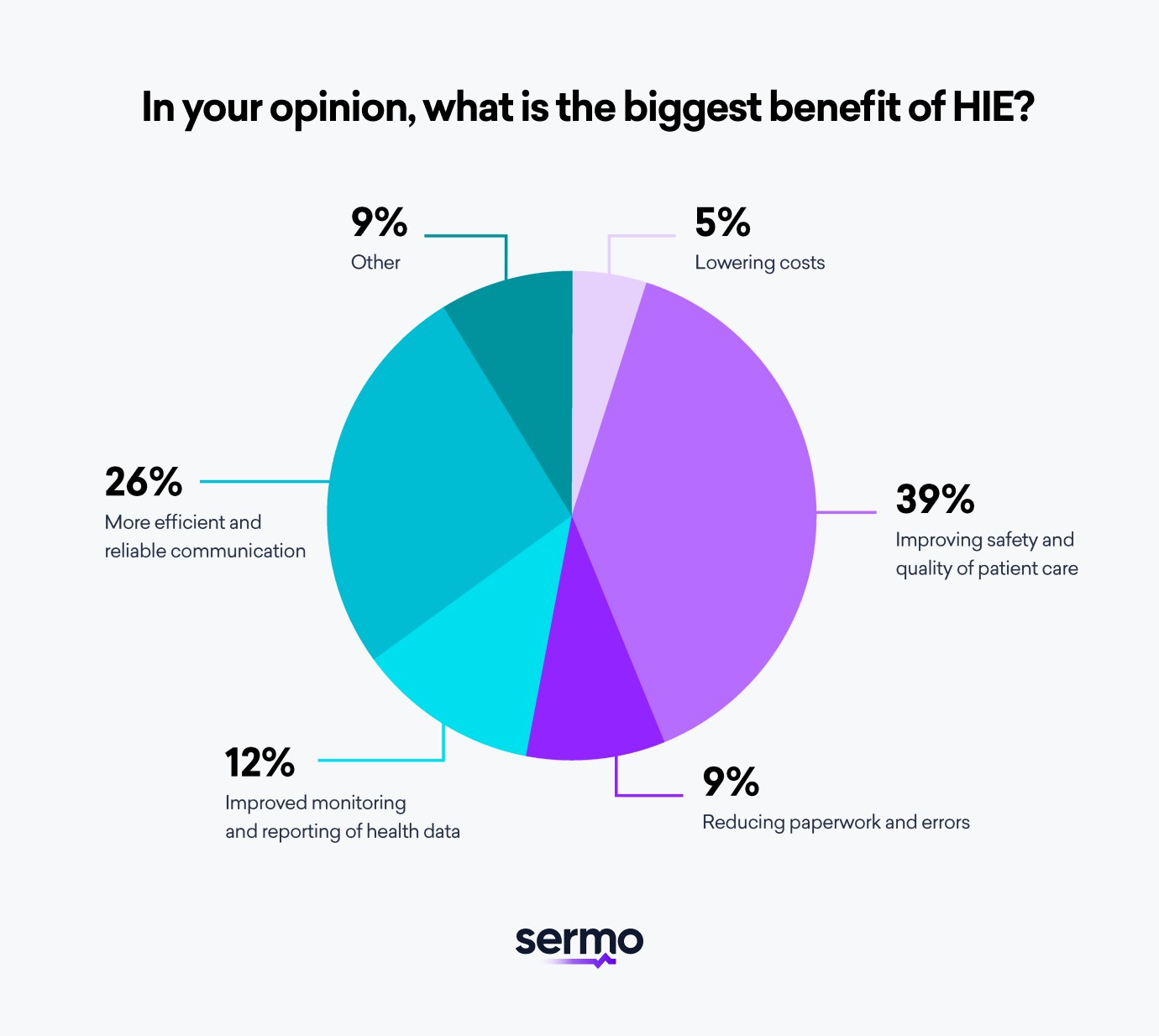
Benefits of HIE
The ability to quickly and easily send patient records and medical information electronically can work wonders for your practice. But how specifically can joining an HIE help? Let’s look at how it can benefit both you and your patients:
- Improved outcomes: When every medical professional involved in a patient’s care has the same information, costly and potentially dangerous errors can be avoided. In fact, 39% of physicians in our survey cited improved safety and quality of patient care as the primary benefit of using HIE.
- Quicker treatment: In our physician survey, 26% said efficient and reliable communication was the most significant benefit of HIE. For example, prescription information can be shared directly with pharmacies and surgical supply stores for pre-authorizations so patients can get their meds quicker. On an even bigger scale, 13% of Sermo physicians believe that HIE can help them identify high risk patients sooner.
- Error reduction: Patient care is improved through the elimination of redundant testing, recurring appointments/admissions, incorrect diagnoses, medication mistakes, and other medical errors. HIE also reduces paperwork and paperwork errors — a major concern for 9% of physicians.
- Improved patient involvement: Encouraging patient involvement leads to increased awareness and a greater understanding of personal healthcare management. By getting personal information directly from the patient, physicians gain valuable insights into their treatment.
- Improved reporting: Especially with regard to public health information. In fact, 12% of physicians who participated in our survey reported that the improved monitoring and reporting of health data was the biggest benefit of HIE.
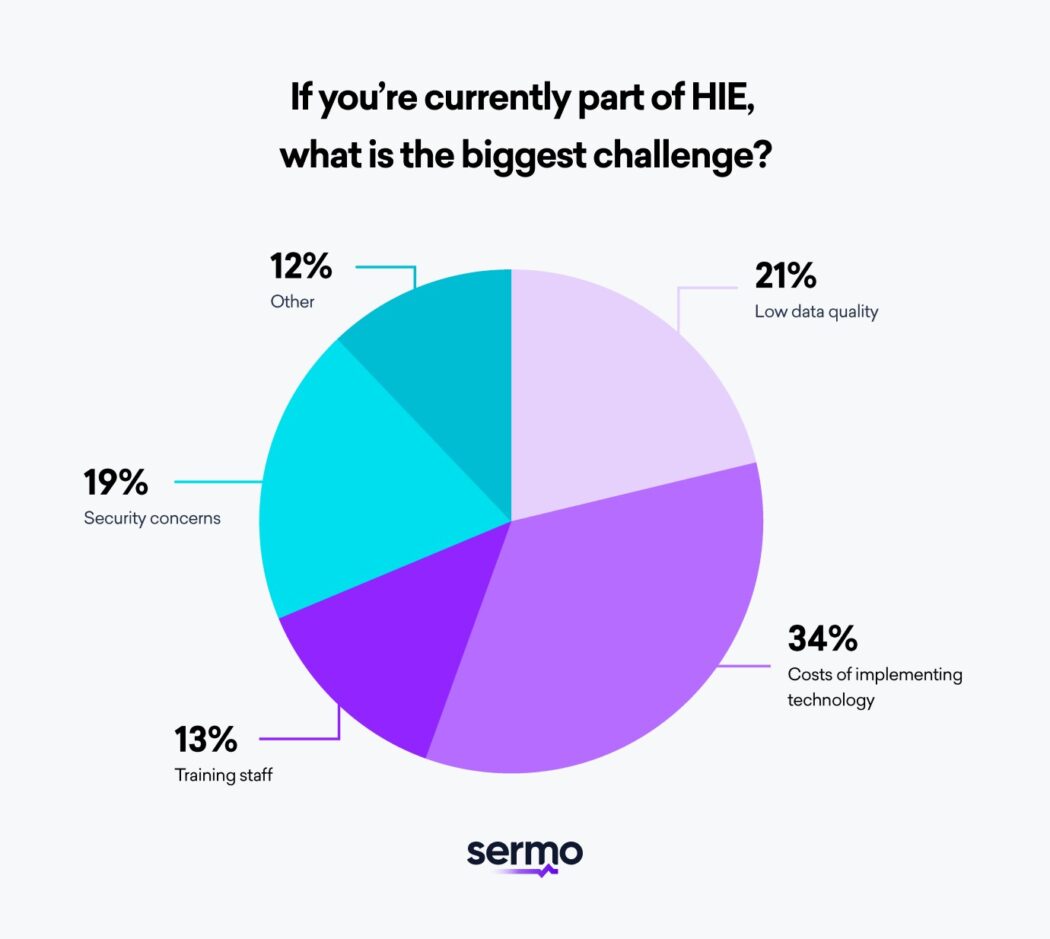
Challenges of HIE
While documentation in the medical field is going increasingly digital, physicians are still experiencing growing pains. When we asked physicians what the #1 reason they didn’t use HIE more often, the majority (31%) stated that it simply took up too much time. Others stressed their dissatisfaction with the lack of face-to-face interaction with patients:
“Greatly decreased face to face time with patients.”
OBGYN, U.S.
“Just another way to spend more time interacting with a computer, and less time with patients face to face.”
Family Medicine, U.S.
Let’s look at some additional challenges physicians face with HIE:
- Costs of implementation: While the benefits listed above have the potential to reduce overhead costs in the long run, 34% of physicians find the initial cost of implementing HIE technology the biggest challenge.
- Data quality: Despite many physicians praising its more efficient communication, data quality remains low. 21% of survey respondents said that low data quality was the main challenge, while 11% said that it’s the main reason they don’t use HIE more often.
- Navigating data: While the wealth of information is meant to help physicians, many find that it bogs them down. One of our survey respondents compared finding relevant information to “digging for buried treasure” (Family Medicine, U.S.).
- Training staff: As with any big change in healthcare practice operations, staff and personnel are required to spend time training — time that many healthcare practices don’t have. In our survey, 13% of physicians believe that training staff is the biggest hurdle to overcome.
- IT issues: Where there’s technology, there are IT issues. This doesn’t only take up valuable time, it can cause errors in medical records and have serious consequences for practices. Nearly a quarter of survey respondents (21%) state that technical issues are the main factor keeping them from taking advantage of HIE more, while 19% have major security concerns.
- Lack of coordination tools: Despite the HIE’s purpose as a way to easily connect and share information, physicians are finding its lack of care coordination tools frustrating. In fact, a whopping one-third (33%) of physicians believe it’s the most important thing HIEs should improve upon. Another tool that’s lacking? Telehealth, with 13% of physicians wanting to see improvements within this in-demand space.

Joining a health information exchange
The rise in the electronic sharing of health information and increased emphasis on interoperability makes joining an HIE a top priority for many physicians. Follow these steps to get started:
1. Research the available HIE healthcare systems
You’ll typically end up choosing from a list of four options:
- Statewide HIE: State-designated entities (SDEs) exist in many states to provide data exchange services.
- Local network HIE: Some hospitals and healthcare systems offer ways to connect with other healthcare providers in your local network.
- Regional HIE: Regional providers typically offer higher levels of support and increased interoperability at both regional and state levels.
- Vendor integration: Some electronic health records (ERHs) have integrated software that facilitates direct secure messaging so you can send HIPAA-compliant email messages; although it’s unlikely this equates to full HIE connection with query capabilities.
2. Start a dialogue with service providers in your region
Every HIE service will offer different services. The one that’s best for you will ultimately depend on your practice’s goals and missions. So, when checking your options, be sure to assess each one for:
- Internal requirements (what do you need in place to get started?)
- Technology used (on what platform is health information exchanged?)
- Economic return on investment (ROI)
- Non-economic (indirect) ROI
- Risks
- Liabilities
- Overall sustainability
3. Talk with your vendor
Reach out to discover whether electronic health information exchange can be incorporated into the functionality of your existing EHR. Be sure to double-check:
- Which privacy features are supported
- Which security features are supported
- What forms of exchange are supported
- The upgrade cost to include HIE
- Additional monthly fees or maintenance costs
Once you have thoroughly researched each option and have all of the answers and information you need, you should be ready to decide on the type of HIE that’s best for your practice.
Power up your practice with Sermo
Still unsure about where to begin? Signing up for a Sermo account is a great way to build a wider professional network, providing access to an online space where you can ask questions and seek advice. We are the original social network for doctors, allowing thousands of members to exchange knowledge with each other every day.
Built by physicians, for physicians, our platform fosters impactful peer-to-peer collaboration and discussions that help you stay up to date with the most recent technological developments and hot topics. Plus, you can showcase your expertise and experience and boost your reputation by solving cases and participating in daily polls and paid physician surveys. Physicians can join for free today.
